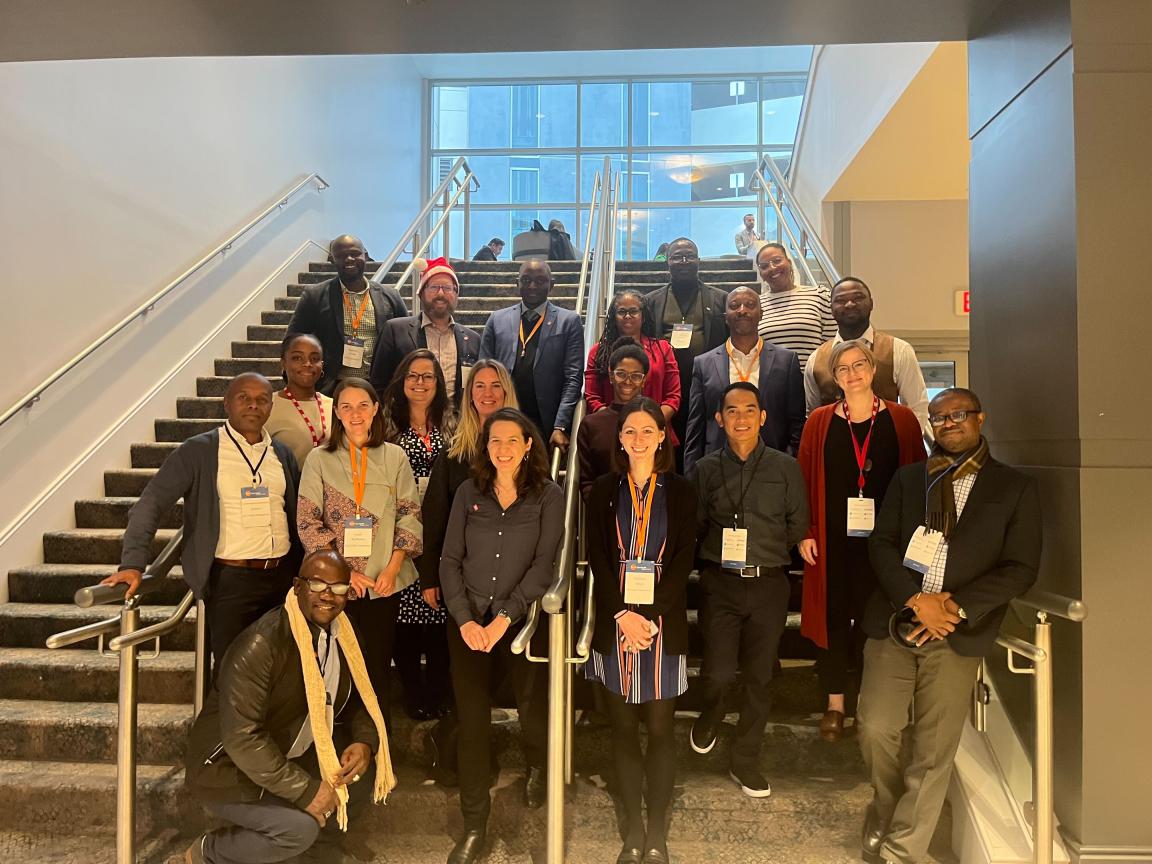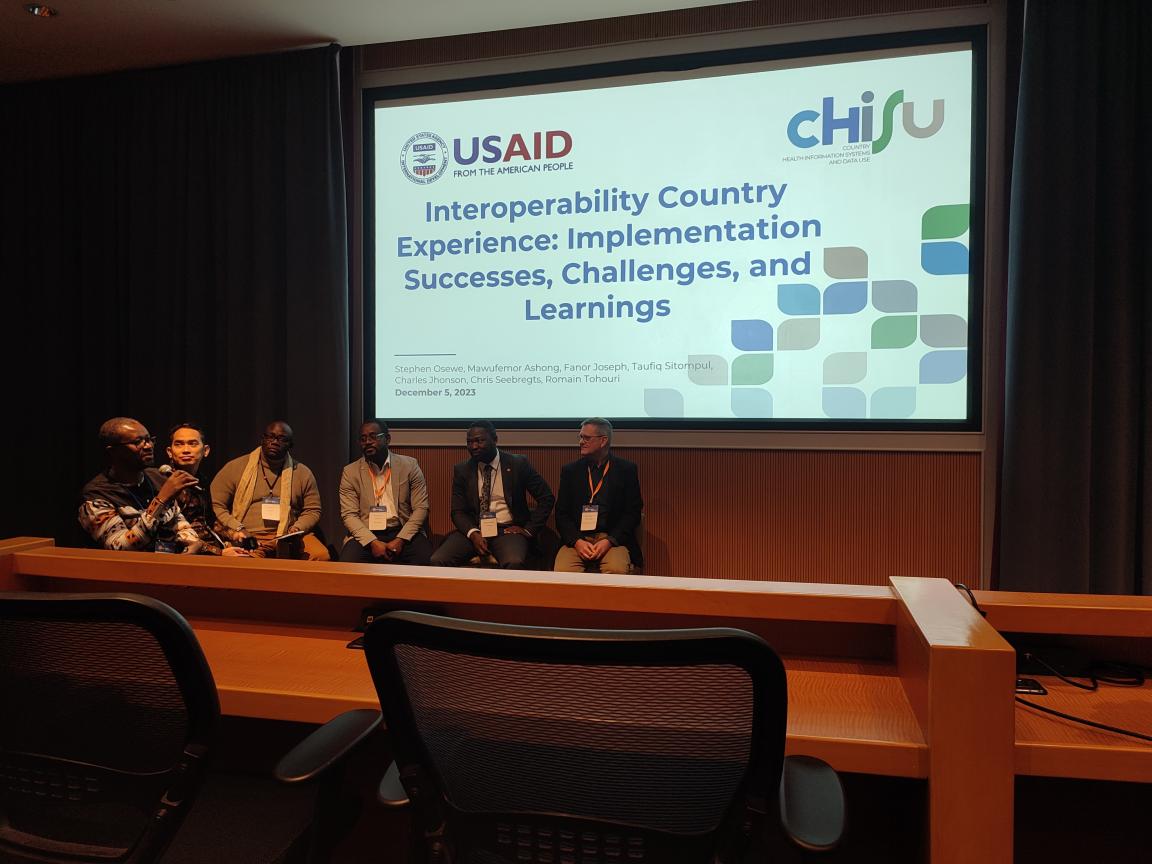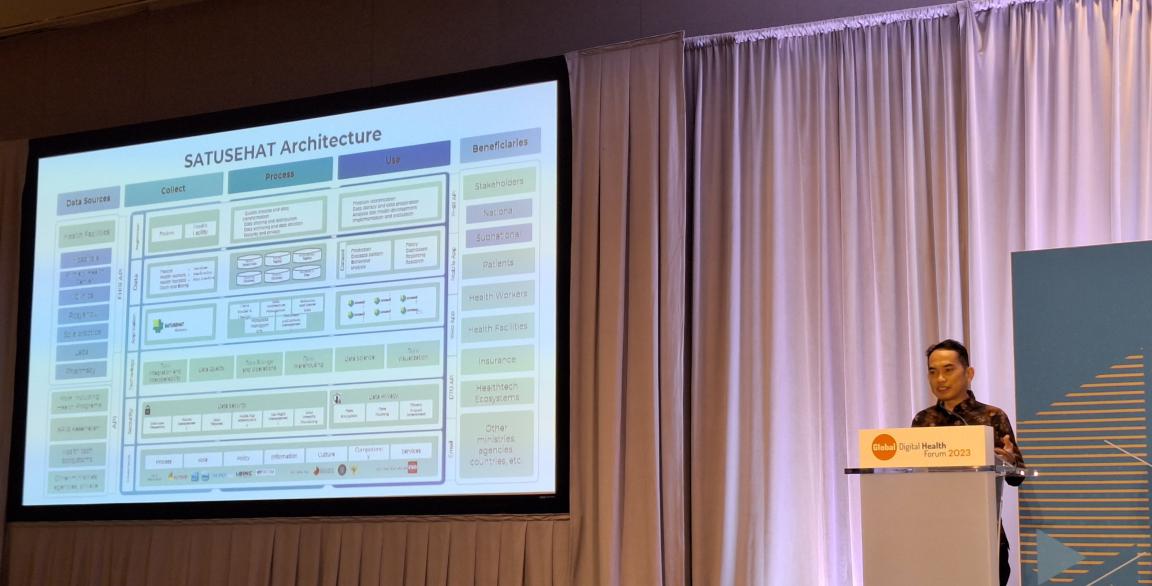“What can we do today, now, as a part of this environment and even in this room, to be able to consider ways to break silos in health data?” USAID Bureau for Global Health Deputy Assistant Administrator Sangita Patel asked in her keynote address to open the 2023 Global Digital Health Forum (GDHF). “To be able to not duplicate efforts in digital platforms and tools? And also to reduce some of the administrative and managerial burden associated with keeping all these systems in operation.”
Throughout her keynote on Monday, December 4, Patel highlighted the progress countries have made so far in their digital health journeys—and all the work there is still left to do. She encouraged attendees to think about how we can collectively address the challenges countries face in achieving their digital health goals.

Patel also discussed a few key themes for GDHF, including the importance of a strong primary health care system in responding to health challenges countries face—as well as the idea of country digital health strategies as the “guiding star” in our efforts to strengthen health information systems.
She identified Indonesia’s national health information exchange platform (called SATUSEHAT) as an important example of USAID’s digital health strengthening work. CHISU has supported Indonesia’s Ministry of Health in the rollout of SATUSEHAT to improve the exchange of health data within and between health facilities and program-specific systems.
Taufiq Sitompul, CHISU Senior Technical Advisor, presented in a CHISU panel session called “Interoperability Country Experience: Implementation Successes, Challenges, and Learnings” to share the context, challenges, and support provided so far for SATUSEHAT’s implementation. These efforts help to ensure the exchange of data between vertical systems (including for TB, HIV, and maternal and child health) and personal health record systems (such as primary care facilities’ electronic medical records) to ultimately help with integration of health data—and clients’ health care experience across the continuum of care.
“We think that this is a good example of how to provide health workers with the information that they need, and ultimately help to manage patients in a more streamlined manner,” Patel said in her keynote.


CHISU also led and participated in GDHF sessions about how digital health investments during the COVID-19 response have strengthened health systems beyond the pandemic itself in Burkina Faso; Haiti’s efforts to create a national health management information system; and more. CHISU Technical Director Derek Kunaka participated in a panel with USAID representatives to share perspectives form USAID Missions in four countries (Ethiopia, Ghana, Indonesia, and Madagascar), and Deputy Director Dr. Stephanie Watson-Grant spoke on a panel introducing the African Women in Digital Health (AWiDH) action plan as part of AWiDH’s efforts to remove barriers to for women’s meaningful engagement and leadership in digital health.
CHISU Program Director Steve Ollis was interviewed in a pop-up studio at GDHF and asked about how his takeaways have evolved in the 12 years that he’s been attending the Forum. He said it’s clear that people are excited about digital health and that we need to invest in interoperability and governance, and now it’s time to shift our focus to bigger questions.
“How have you improved the health outcomes? How have you changed the life of that health worker, or of that client in the health system?” Ollis said. “So it’s really important now to move to how we can show return on investment as far as funds saved and time efficiencies, but also as far as improving quality of care.”
Fanor Joseph, CHISU HMIS Technical Advisor, presented about how implementing dashboards and mobile scorecard apps has increased data accessibility in Madagascar.
“GDHF this year was an opportunity for me to learn from other countries’ progress, experiences, and challenges on interoperability between existing systems and the use of digital solutions to improve data quality, analysis, and use,” he said.
Mawufemor Ashong, CHISU Health Informatics Specialist in Ghana, led a session about how leveraging a private access point name (APN) is a cost-effective solution for implementing SORMAS, Ghana’s public health outbreak and response tool. He said that he had a number of takeaways from the Forum, but the question that stuck with him the most was around health apps.
“What makes social media apps user-friendly and engaging, while health apps struggle to engage users—despite having the same user base?” he said. “One problem with health apps currently is that users often need continuous training on how to use them.”
Nasolo Thompson, CHISU Eastern and Southern Caribbean/Latin America and the Caribbean Regional Coordinator, attended a number of sessions at GDHF, including one about community health aides and their contribution to the digital health movement. She said that one community health aide told participants that the tool she needed the most to do her work wasn’t digital—it was a wheelbarrow. This made Thompson reconsider what the basic necessities are in the work CHISU does, beyond fundamentals like internet connectivity and electricity.

Another key takeaway for Thompson was the importance of including different perspectives and people from all backgrounds in digital health strengthening work. One voice that Thompson said often gets left out is from people who don’t have a high education level and aren’t well-informed on pressing issues in digital health, which can be technically intimidating discussions.
“Which other voices do we not hear because we’re often only looking for a particular voice?” she said.